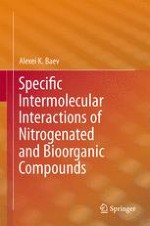
2014 | OriginalPaper | Buchkapitel
1. Hydrogen Bonds and Specific Intermolecular Interactions of Nitrogenated and Bio-organic Compounds and the Methodology of their Investigation
verfasst von : Alexei K. Baev
Erschienen in: Specific Intermolecular Interactions of Nitrogenated and Bioorganic Compounds
Verlag: Springer Berlin Heidelberg
Aktivieren Sie unsere intelligente Suche, um passende Fachinhalte oder Patente zu finden.
Wählen Sie Textabschnitte aus um mit Künstlicher Intelligenz passenden Patente zu finden. powered by
Markieren Sie Textabschnitte, um KI-gestützt weitere passende Inhalte zu finden. powered by